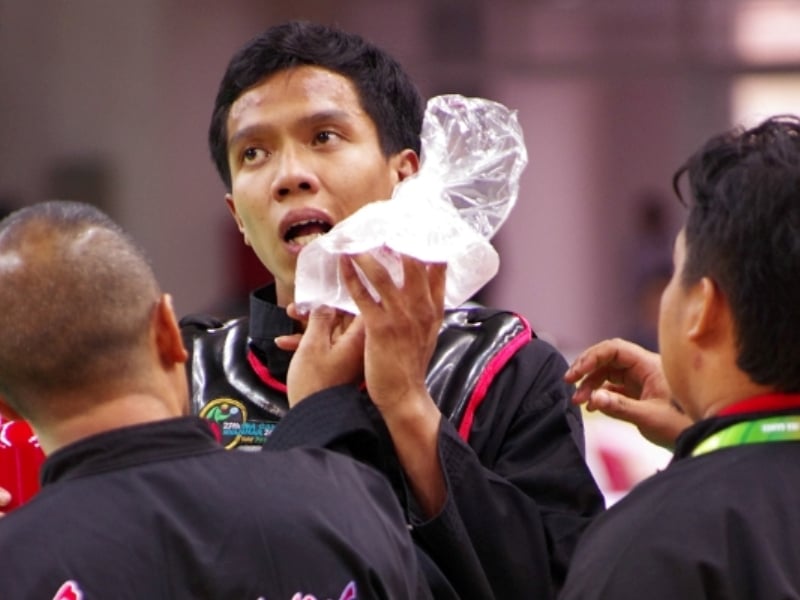Silat: Conditioning and improving flexibility

Image credit: SportSG
There are three basic strike moves in Silat - straight punch, uppercut and palm strike. Many fighters practice these moves in order to better understand how they can defend against them. The straight punch is the most commonly used. To avoid a straight punch from the right, you will need to dodge to the left and counter with a punch to the opponent's body. When facing a taller opponent, the upper cut is especially useful, but in order to counter one from the right, you should dodge left and counter with a strike to the opponent’s chest or face. The palm strike is similar to the uppercut, only you strike with an open palm instead of a fist.
An effective drill to train your footwork is the running side step. Decide on the number of steps in a repetition, before you begin running on the spot. At the chosen number of steps, you take a step to the side without breaking the flow of running.
Flexibility is important in Silat as you may need to stretch, lunge or jump to attack or counter a strike. It can be improved via one of three forms of stretching - dynamic, static active and static passive.
Dynamic stretching involves stretching the muscles in a slow and gradual motion. An example is swinging your leg forward and back while standing in a stable position. You only move your leg at the pelvic/hip joint, by swinging it slowly and increasing the range of the swing gradually. You may also increase the speed of the swing when you feel comfortable.
Static active stretching involves attaining and sustaining a position for a length of time. To improve your high kicks via static active stretching, lift your leg in a straightened manner against a flat wall and press down till you feel the stretch. Hold for 10-15 seconds before relaxing, then repeat the stretch.Static passive stretching is attaining and sustaining a stretch position with assistance. An example is sitting on the floor with your legs straight in front of you and a partner pressing your body towards your legs till you can feel the stretch in your legs.
To receive the latest updates on the happenings in the Singapore sports scene, or to find out more about some of the latest programmes on offer at ActiveSG, like our Facebook page here.





![ActiveSG Academies and Clubs Logo (Solid Colour)[8647]](https://www.activesgcircle.gov.sg/hs-fs/hubfs/ActiveSG%20Circle%202023Theme/images/ActiveSG%20Academies%20and%20Clubs%20Logo%20(Solid%20Colour)%5B8647%5D.png?width=150&height=65&name=ActiveSG%20Academies%20and%20Clubs%20Logo%20(Solid%20Colour)%5B8647%5D.png)




-01.png?width=200&height=141&name=Team%20Singapore%20Logo%20(Red)-01.png)



